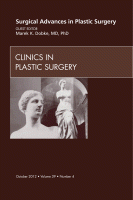Varkey, M. et als.
Burns & Trauma. 2019; 7:4
 Burns are a significant cause of trauma, and over the years, the focus of patient care has shifted from just survival to facilitation of improved functional outcomes. Typically, burn treatment, especially in the case of extensive burn injuries, involves surgical excision of injured skin and reconstruction of the burn injury with the aid of skin substitutes. Conventional skin substitutes do not contain all skin cell types and do not facilitate recapitulation of native skin physiology. Three-dimensional (3D) bioprinting for reconstruction of burn injuries involves layer-by-layer deposition of cells along with scaffolding materials over the injured areas. Skin bioprinting can be done either in situ or in vitro.
Burns are a significant cause of trauma, and over the years, the focus of patient care has shifted from just survival to facilitation of improved functional outcomes. Typically, burn treatment, especially in the case of extensive burn injuries, involves surgical excision of injured skin and reconstruction of the burn injury with the aid of skin substitutes. Conventional skin substitutes do not contain all skin cell types and do not facilitate recapitulation of native skin physiology. Three-dimensional (3D) bioprinting for reconstruction of burn injuries involves layer-by-layer deposition of cells along with scaffolding materials over the injured areas. Skin bioprinting can be done either in situ or in vitro.
 Invasive and noninvasive plastic surgical procedures have undergone exponential growth over the last 30 years, due in part to an expansion of extensive basic and clinical research. The purpose of this article is to examine how plastic surgeons learn to use novel technology in their practices. In addition, a critical evaluation of current teaching methods as they relate to surgeon competence in these new technologies is discussed. Mention of specific technologies is done for demonstrative purposes to illustrate how practitioners of plastic surgery gain competence in their safe and effective use.
Invasive and noninvasive plastic surgical procedures have undergone exponential growth over the last 30 years, due in part to an expansion of extensive basic and clinical research. The purpose of this article is to examine how plastic surgeons learn to use novel technology in their practices. In addition, a critical evaluation of current teaching methods as they relate to surgeon competence in these new technologies is discussed. Mention of specific technologies is done for demonstrative purposes to illustrate how practitioners of plastic surgery gain competence in their safe and effective use.




 Sitio web publicado el
Sitio web publicado el
Los lectores comentan